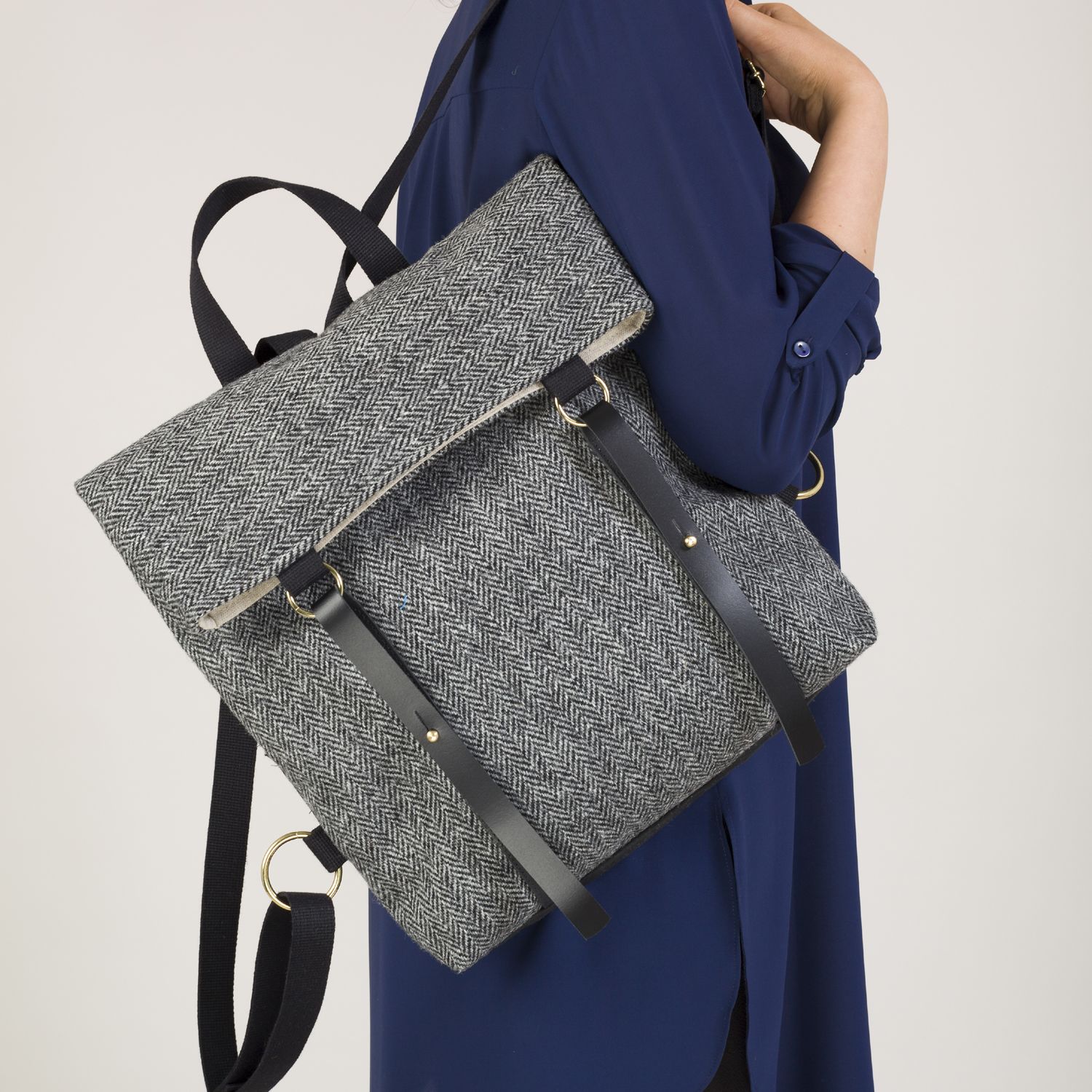Harris Tweed - Then and Now
Harris Tweed is the only fabric in the world today that is guarded and protected by its own Act of Parliament, but what is the story of this remarkable fabric?

Today, people know Harris Tweed as the only fabric in the world that is guarded and protected by its own Act of Parliament and statutory body, the Harris Tweed Authority.
This Act of Parliament guarantees that every piece of Harris Tweed is handmade by the people of Outer Hebrides, just as it was a long time ago.
The story of Harris Tweed is about love, friendship, dedication and the wish to keep a piece of history intact.
Lorna Macaulay, CEO of the Harris Tweed Authority, tells us the story of this remarkable fabric: "There was evidence of a weaving sector here in the islands from times immemorial, there has always been a sort of a culture of weaving cloth, using the animals to make cloth from.
The industry itself was born about 1846, when Catherine Dunmore, the Countess of Dunmore moved to the island, and she befriended the locals who were making cloth. There was no Harris Tweed industry by then, they were just weaving cloth.
She liked what they were doing and she began to encourage them to formalize it into something more commercial and industrial.
After the Earl of Dunmore died, when she was settling his estate and travelling back and forth from the island to London she would bring samples of the cloth that would be woven by the locals to London with her, sell it to her wealthy friends and associates there, and bring new orders back for the locals to weave. So an industry was born."
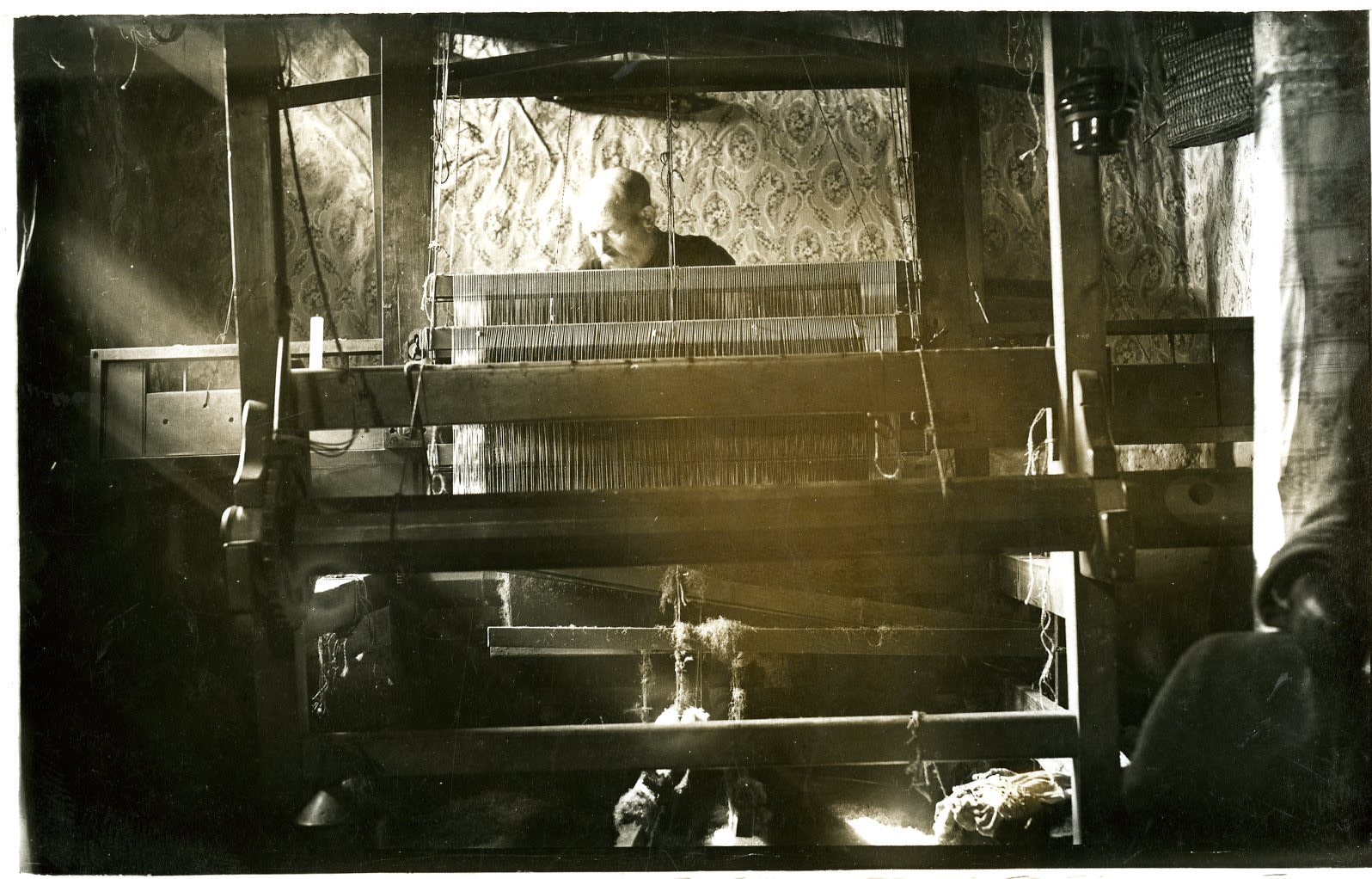
Hand weaving Harris Tweed - Photo from the Harris Tweed Authority archive
Hand weaving Harris Tweed - Photo from the Harris Tweed Authority archive
As Lorna Macaulay says, the origins of the Harris Tweed Industry are very much linked to the Dunmore family.
Lorna also says: "Obviously in those days all the processes were absolutely by hand. The dyeing was done from natural sources, it would have been done from the grass, from the rocks, so the colour that the wool was dyed was all from natural sources found on the land. "
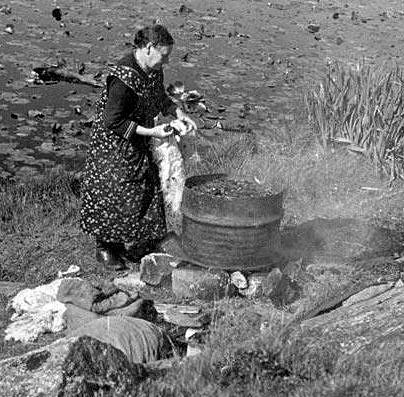
Dyeing Harris Tweed - 1936 - Photo from the Harris Tweed Authority archive
Dyeing Harris Tweed - 1936 - Photo from the Harris Tweed Authority archive
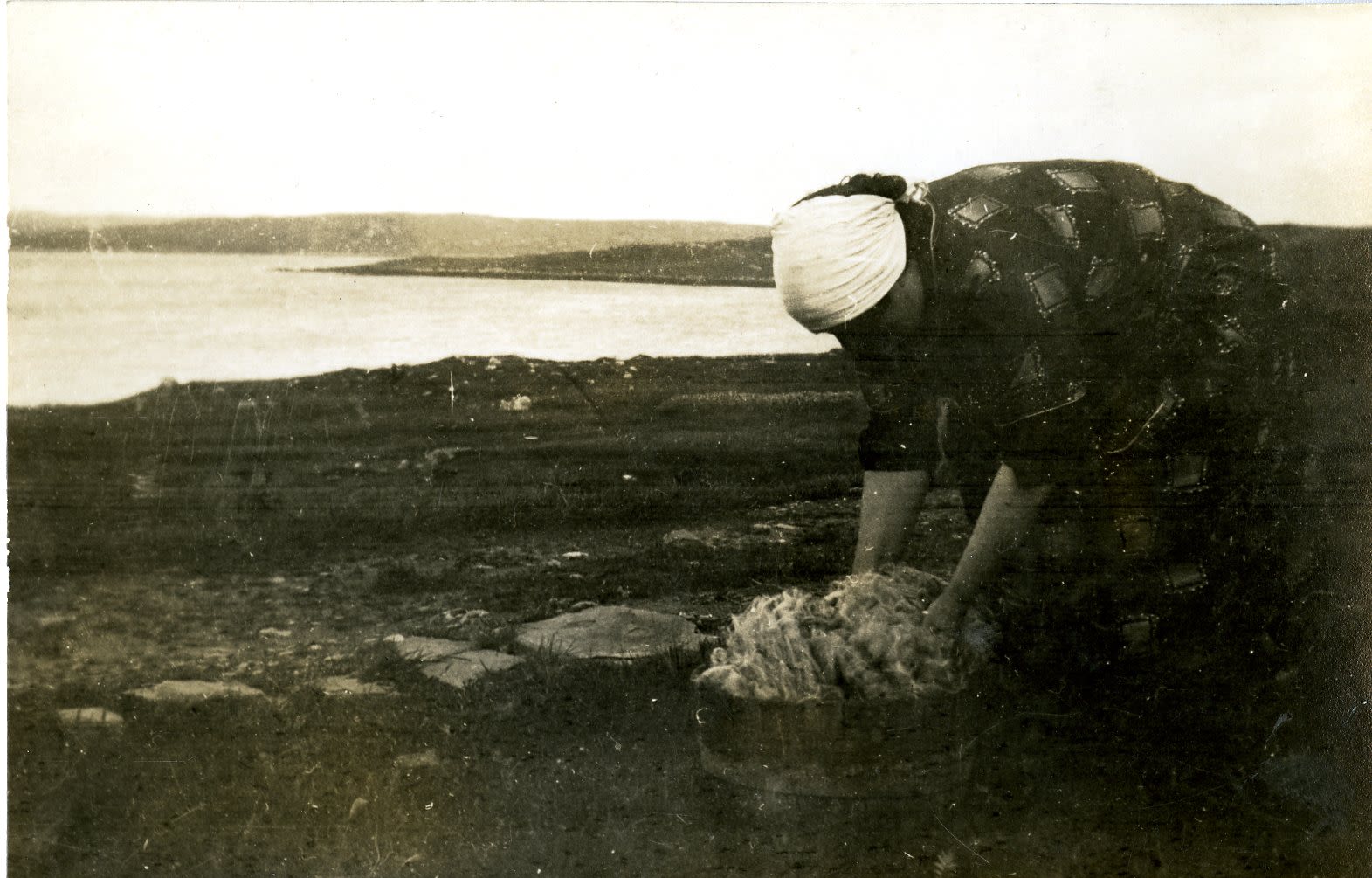
Gathering wool - Photo from the Harris Tweed Authority archive
Gathering wool - Photo from the Harris Tweed Authority archive
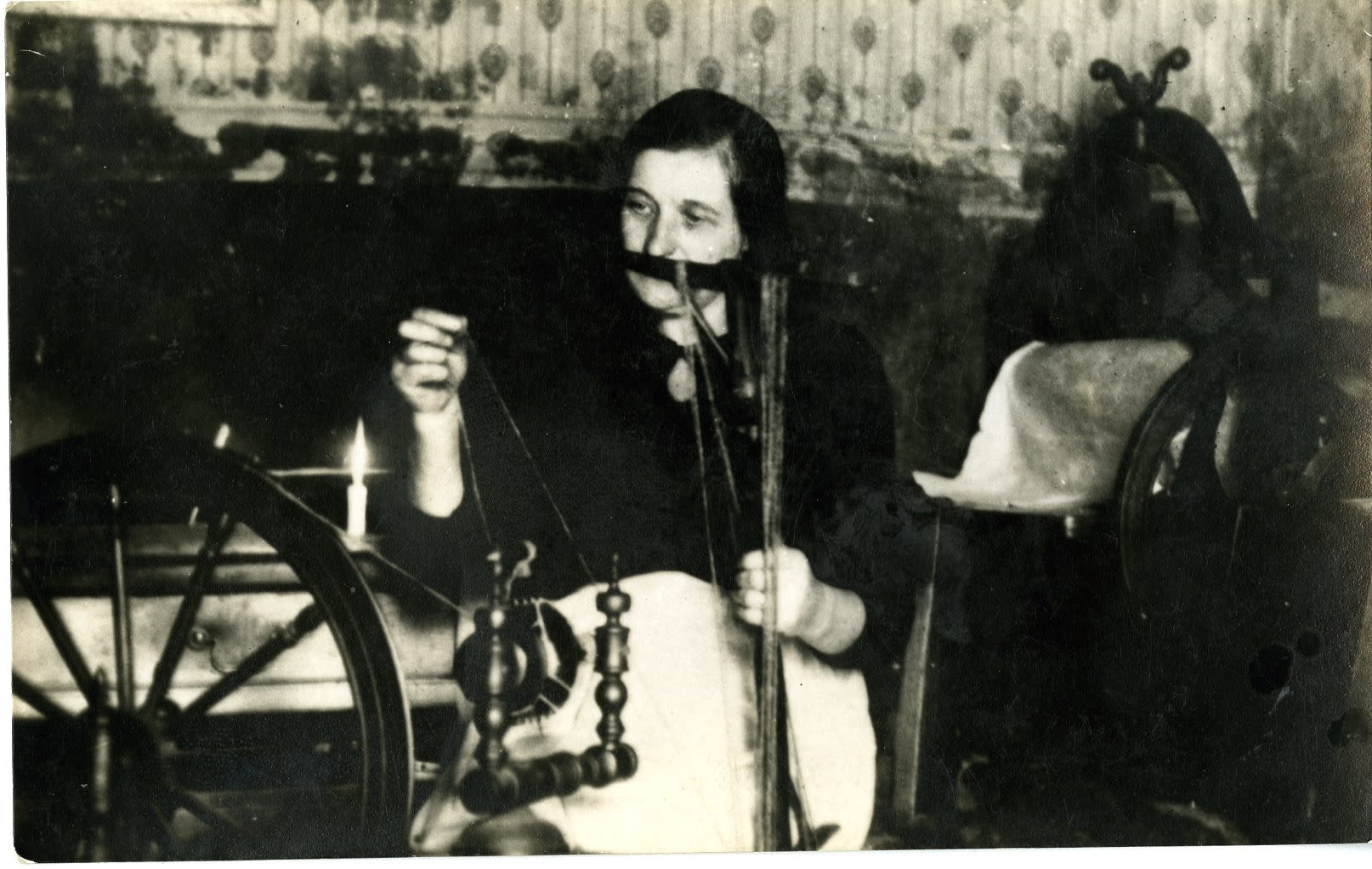
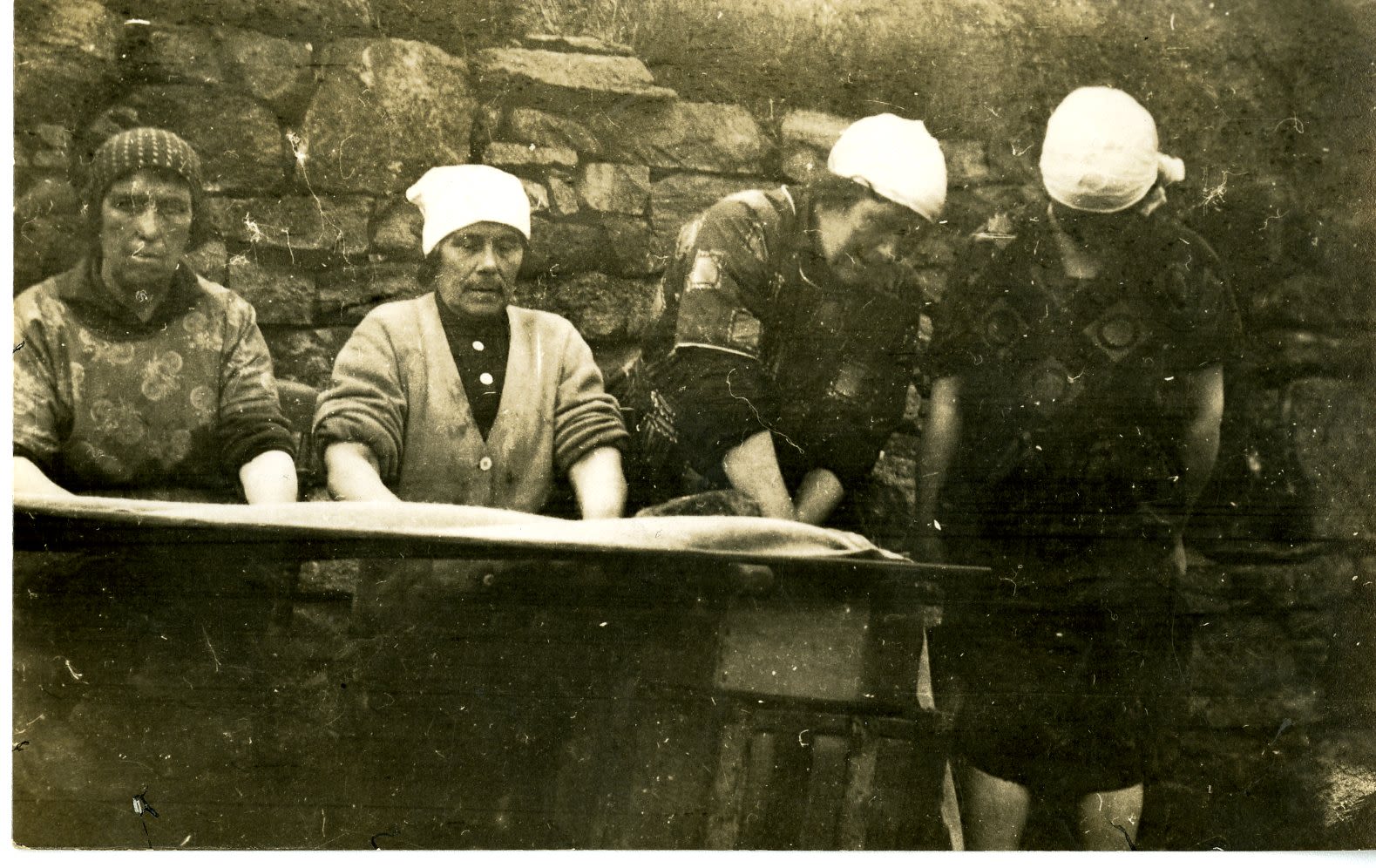
Even though the times have changed, the process of making Harris tweed remained almost the same.
Lorna tells us why: "Nowadays for commercial reasons our dyes are largely commercial dyes, in those days everything would have been from a natural dye, from the land.
The wool would have been handspun in those days, on a spinning frame. Today all of that is mechanized. But the difference from Harris Tweed today and other woven cloth is that today Harris Tweed must still be, by law, woven by hand at the home of the weaver, with no mechanical assistance. It's actually like a bicycle mechanism, the loom."
Here is an interactive comparison between the Harris Tweed production process in the past and now:
The Harris Tweed industry is a traditional cottage industry, that brings employment to their fragile part of the world. The islanders who create the beautiful fabric are far from the market that uses Harris Tweed, that's why it's so important for them that people know about the cloth and they choose to support it.
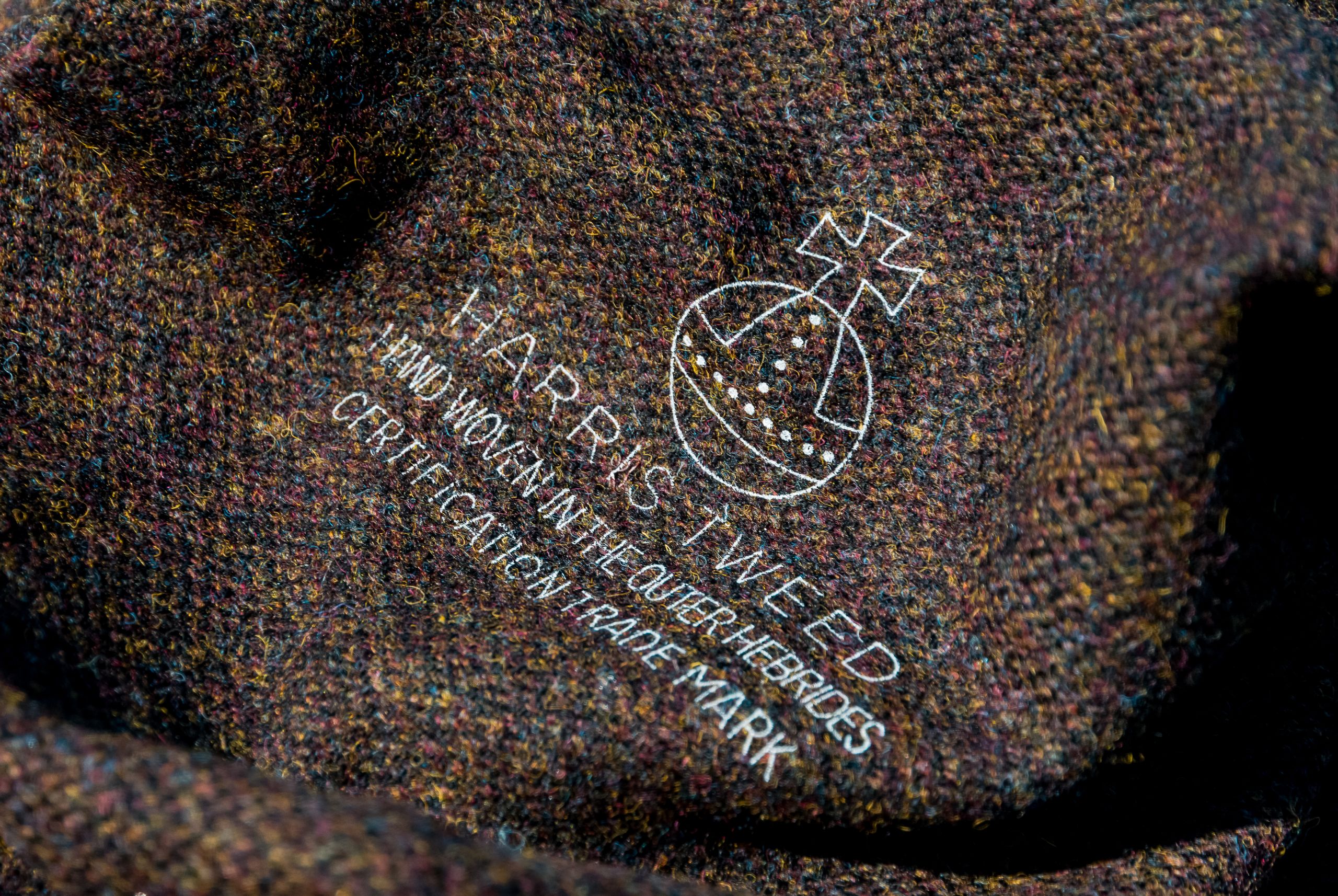
For a long time, the people from the islands, who weave the Tweed by hand in the Outer Hebrides, faced many legal challenges. This is why they created the Harris Tweed Authority. Harris Tweed Production Process - Certified Cloth, Photo taken by Lewis Mackenzie
For a long time, the people from the islands, who weave the Tweed by hand in the Outer Hebrides, faced many legal challenges. This is why they created the Harris Tweed Authority. Harris Tweed Production Process - Certified Cloth, Photo taken by Lewis Mackenzie
Lorna Macaulay said: "There were several legal challenges which attempted to move the Harris Tweed Industry from the islands to Mainland Scotland.
Those who were involved at that time realized that this was too important to allow these legal challenges to continue, so in late 80s, early 90s, they began to work on the creation, on the possibility at that time to put in place some sort of legal protection for the industry.
They began to work up the wording of the Harris Tweed Act, and it was applied for and passed in 1993. What that really meant was that it also created the Harris Tweed Authority, who I work for. Those visionaries who saw the need to create the Act, they wouldn't have seen Ebay and all these other things coming so they were real visionaries."
Harris Tweed is protected by the Act of Parliament and by the Harris Tweed Authority so that the industry can never be taken away from the islanders. Harris Tweed also has a whole extensive network of trademarks all over the world.
Harris Tweed is more than a fabric to the islanders, and every piece of cloth has a story. As they say, "from the land comes the cloth". The colours of the fabric are inspired by landscapes of Scotland:
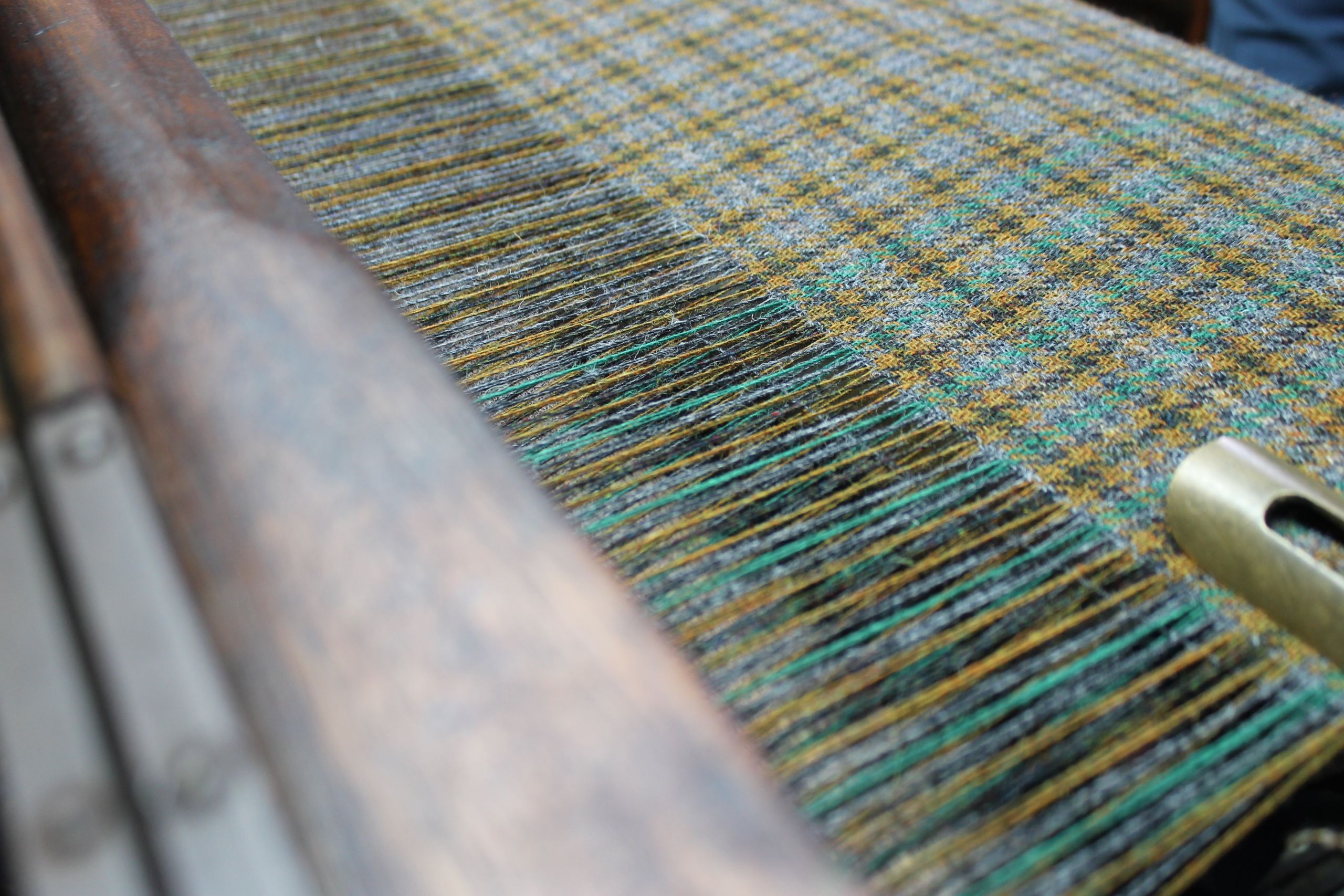

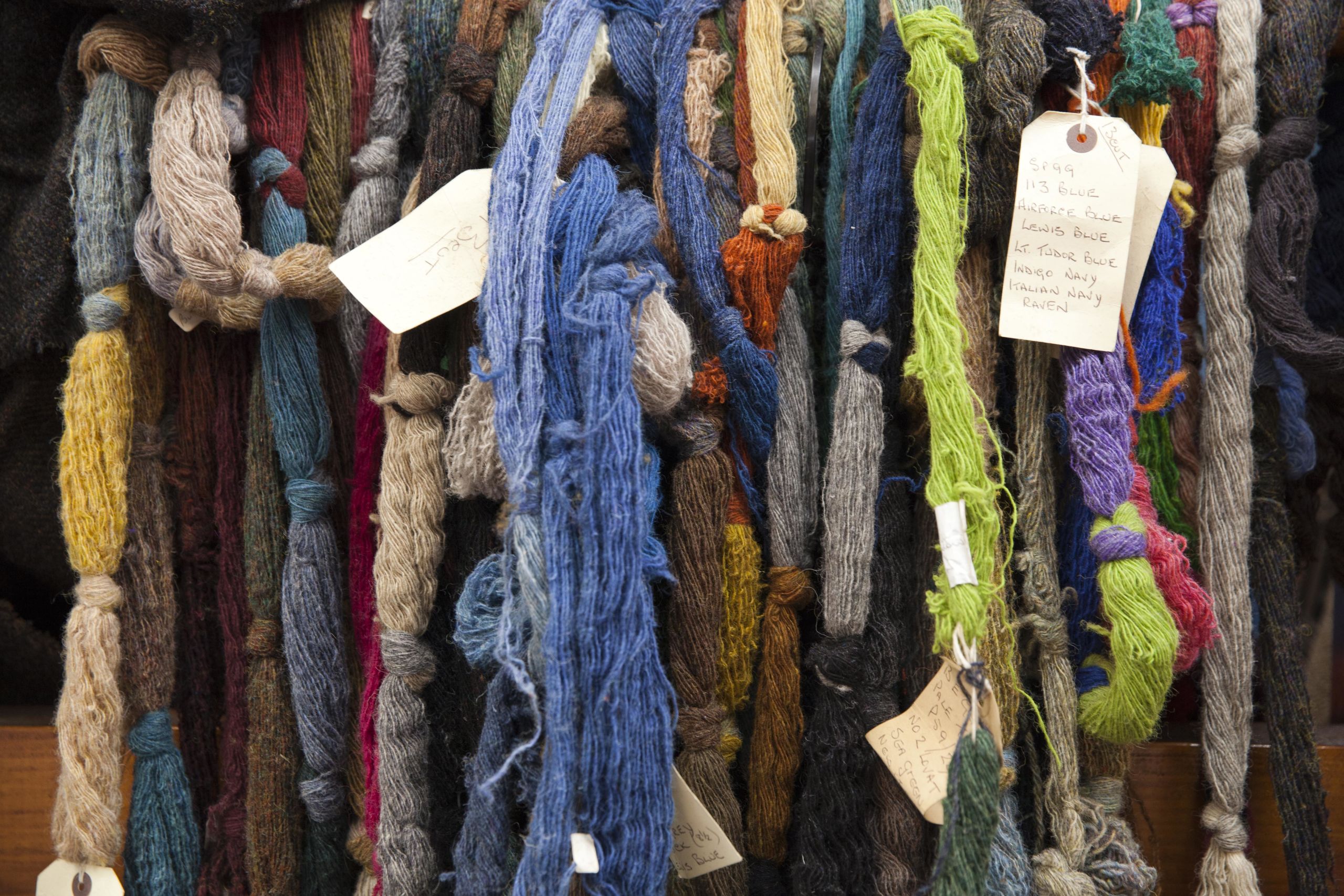
Here is an interactive map with a selection of artisan businesses that work with Harris Tweed:
One of those manufacturers is Amy Britton, an independent designer from Scotland creating accessories with Harris Tweed.
Amy Britton says: "We developed our own Harris Tweed, so that we had our unique selling point, so our tweed is bespoke at a range of colours which are all inspired by the Scottish landscape."
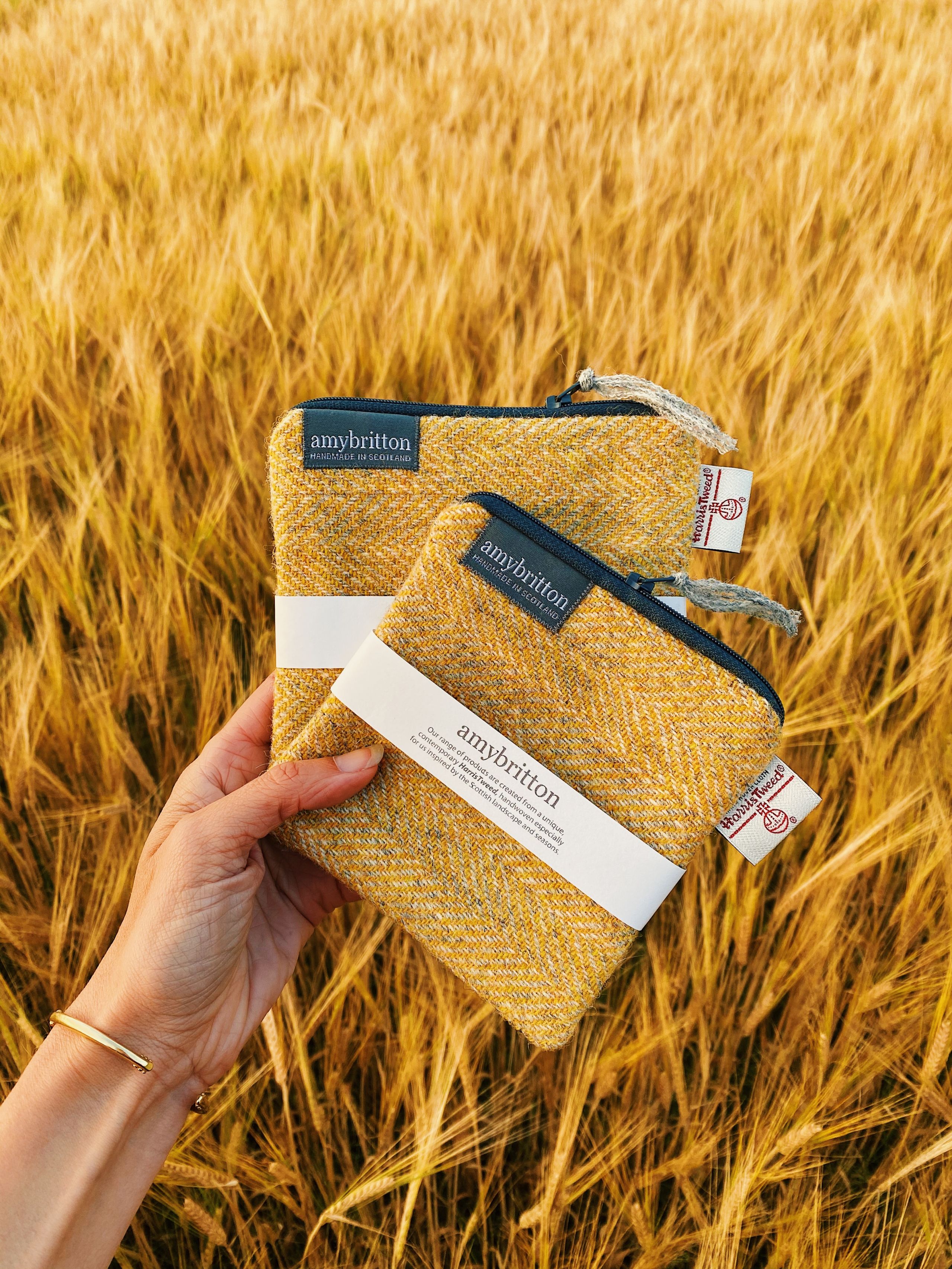
Harris Tweed purse created by Amy Britton, and inspired by nature. Photo: Amy Britton
Harris Tweed purse created by Amy Britton, and inspired by nature. Photo: Amy Britton
Amy also said: "We do purses and glasses cases, cosmetic bags, wash bags, laptop bags, pencil cases, different sizes of purses. All has to be handwoven traditionally."
She started working with Harris Tweed about six years ago, and as she says, her Harris Tweed products have: "A more contemporary feel."
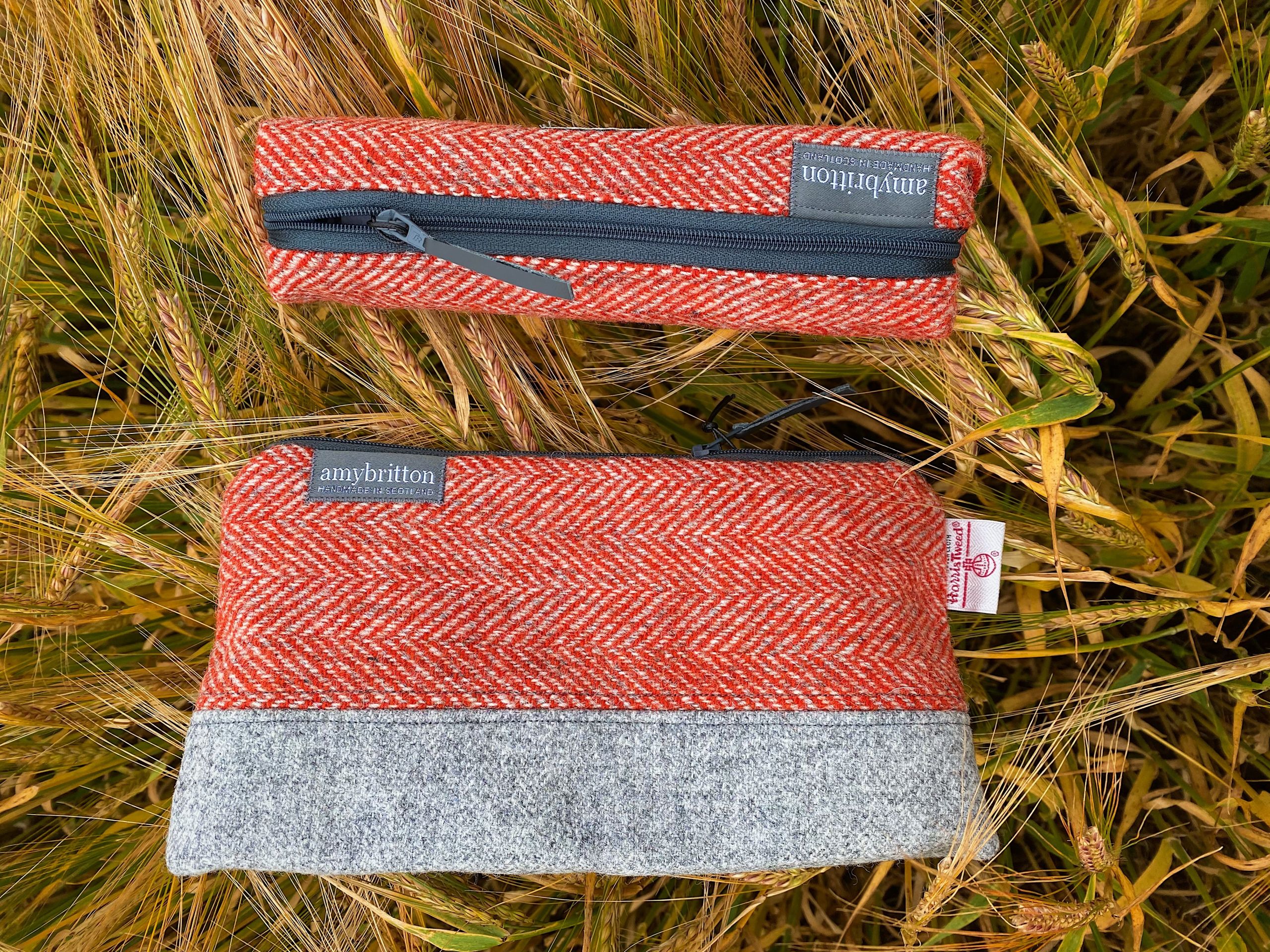
Elizabeth Martin is an award-winning designer and brand owner creating elegant and simple luxury womenswear with Harris Tweed.
Her journey of creating a sustainable, appreciated brand is truly inspirational. Before she started designing with Harris Tweed, she had a furnishing business, and she did that for 13 years.
Elizabeth Martin says: "I've always loved fashion, and I've always loved anything to do with Scotland, I loved fabrics. Furnishing is all about fabrics and I used natural fabrics like linen and silk, and I like using high-end products."

Elizabeth started in 2015, by designing three Harris Tweed waistcoats. She then went to Liberty London for an open day to present her creations to their buyers. The buyer particularly liked one of the waistcoats, and she advised her to design a capsule collection. Photo: The Bonnie Jacket by Elizabeth Martin
Elizabeth started in 2015, by designing three Harris Tweed waistcoats. She then went to Liberty London for an open day to present her creations to their buyers. The buyer particularly liked one of the waistcoats, and she advised her to design a capsule collection. Photo: The Bonnie Jacket by Elizabeth Martin
There are so many things Elizabeth has to share about her work as a designer and about the history and provenance of Harris Tweed. To find out everything, see the video interview below:
Here is an interactive map to help you find the three Harris Tweed mills:
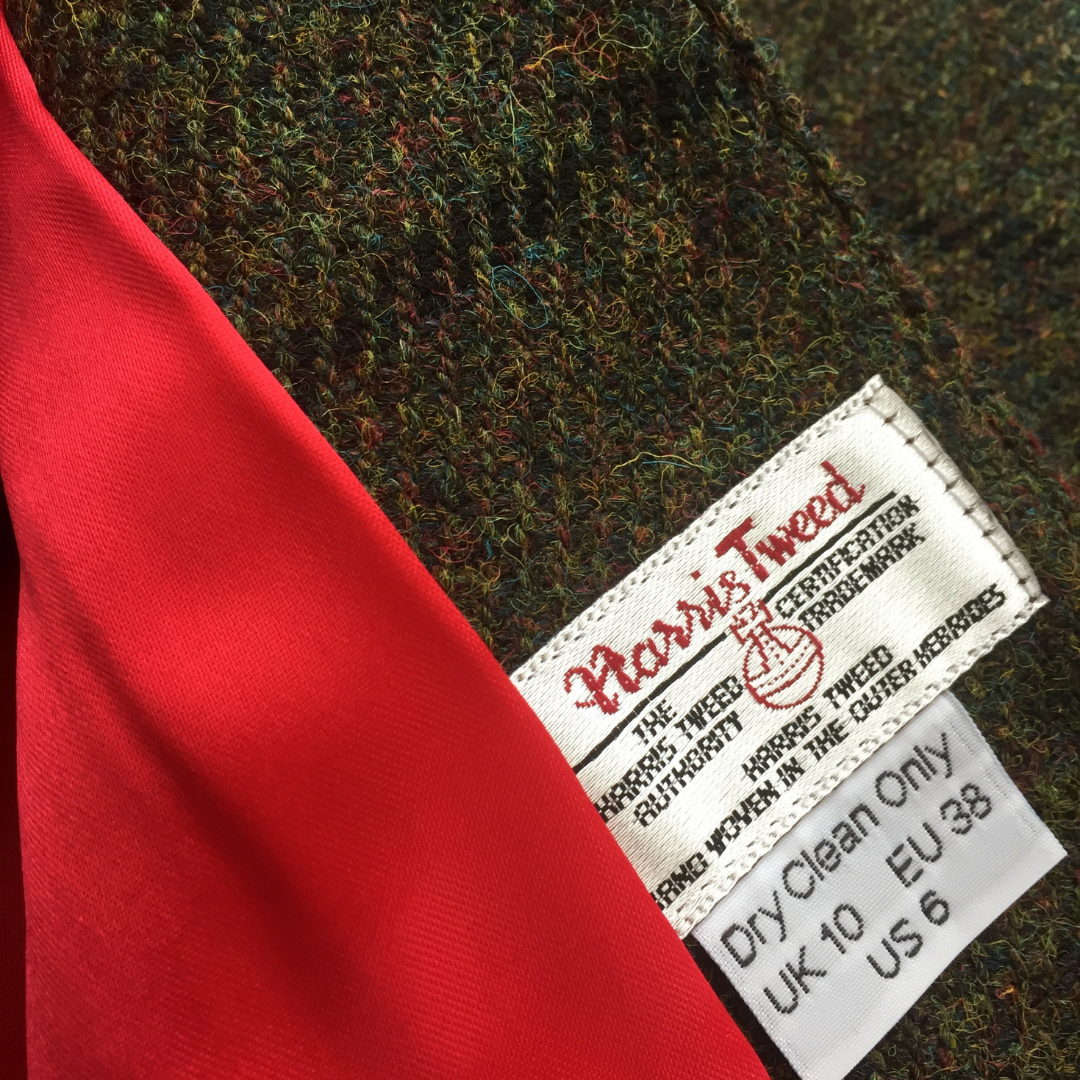
Photo: Elizabeth Martin
Photo: Elizabeth Martin
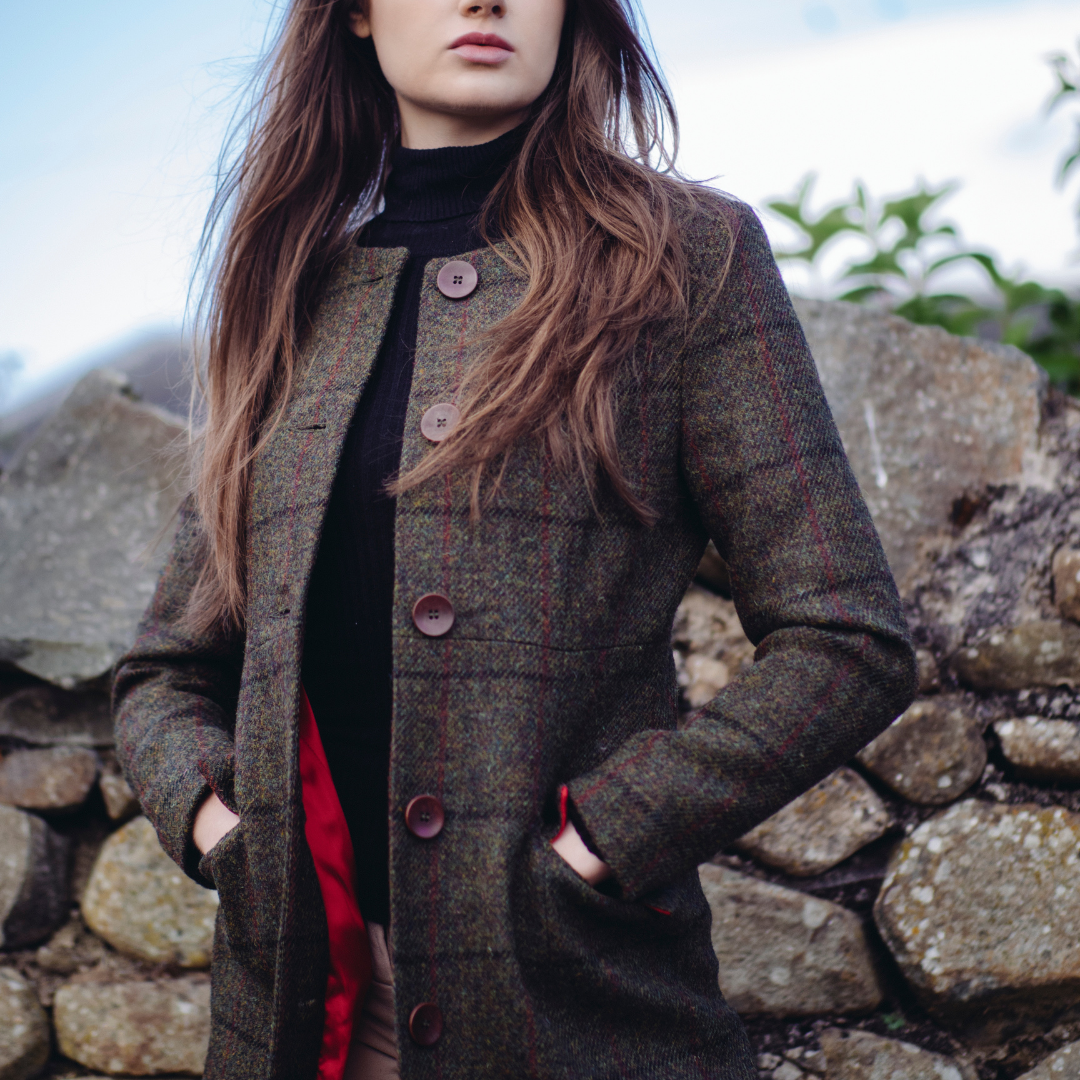
Photo: Elizabeth Martin
Photo: Elizabeth Martin

Photo: Elizabeth Martin
Photo: Elizabeth Martin
Another manufacturer working with Harris Tweed is Catherine Aitken, and her story is also impressive.
Catherine had a busy career in the Scottish film and TV industry producing dramas and developing scripts. When she and her business partner were preparing to go to Cannes Festival to try and sell their new projects, she got the idea to make bags for themselves in order to promote the projects. The people at the festival were so impressed with them that she came back to Scotland with orders for bags.

She kept creating bags so she could have an income while developing her film career, that's how she started her Catherine Aitken brand. Voyager Bags - Photo: Alistair Clark
She kept creating bags so she could have an income while developing her film career, that's how she started her Catherine Aitken brand. Voyager Bags - Photo: Alistair Clark
About working with Harris Tweed, Catherine Aitken says: " My family wore and worked with a lot of Harris Tweed when I was growing up. Then when I started my business I originally based it on repurposing second-hand clothing and then I specialized in repurposing Harris Tweed jackets – and that’s always been a staple in my collections since then.
I love Harris Tweed for its durability, the wonderful quality and the colour range.
I also love the fact that Harris Tweed has a story behind it, that it’s made by hand and has such a history behind it. It makes a fabulous emotional connection to the wardrobe, combining heritage with glamour and with sustainability."
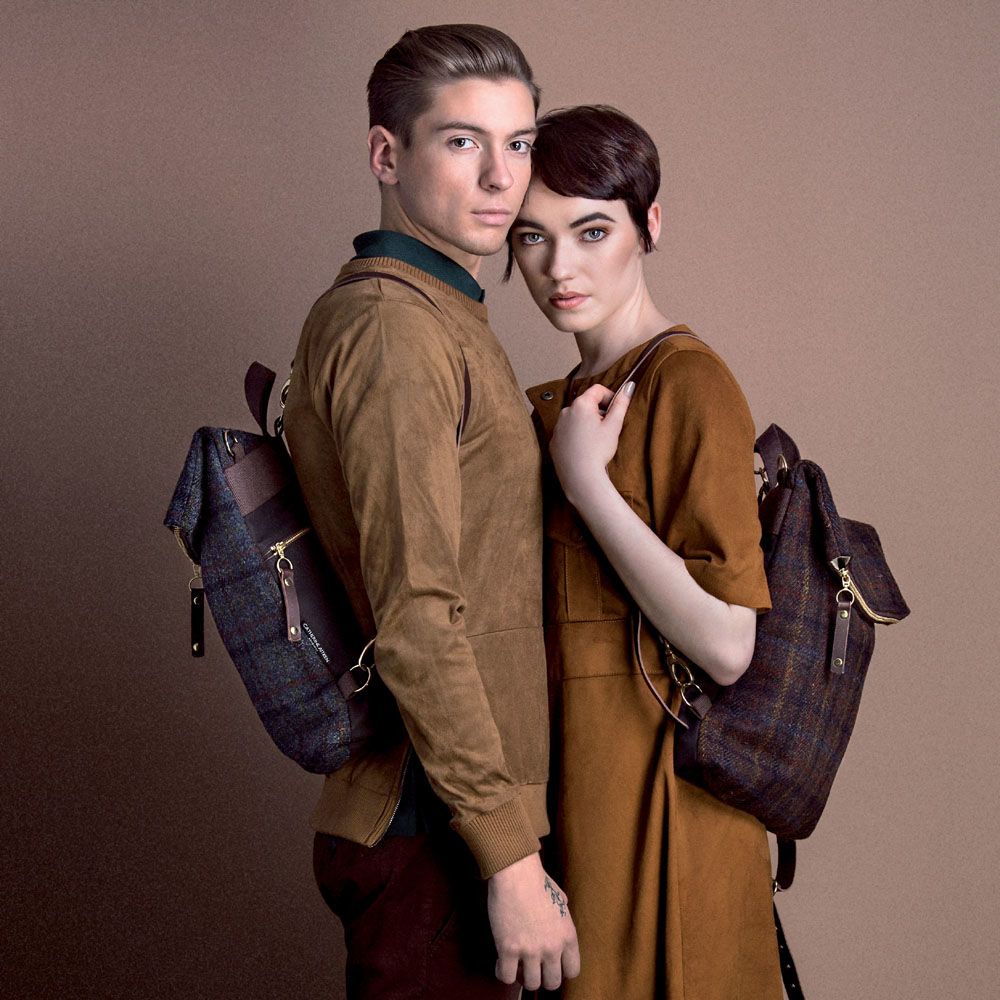
Catherine Aitken CS Wanderlust 4Way - Photo: Paloma Fernandez
Catherine Aitken CS Wanderlust 4Way - Photo: Paloma Fernandez
Catherine Aitken created collections for the British Museum, National Galleries and Judy Murray, she exhibited in the US and Europe and throughout the UK. Currently she is working on new designs and a new collection.

